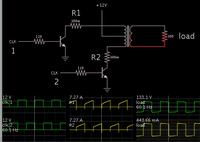alamir2005
Newbie level 3
I have some issue with transformer in proteus and I don't find any answers here
i want to make the following
**broken link removed**
on proteus
the transformer here is center taped at primary , not at secondary
and I don't find any such transformer inside the proteus
so can I set that and what values I should use as inductance and coupling ?
i want to make the following
**broken link removed**
on proteus
the transformer here is center taped at primary , not at secondary
and I don't find any such transformer inside the proteus
so can I set that and what values I should use as inductance and coupling ?
